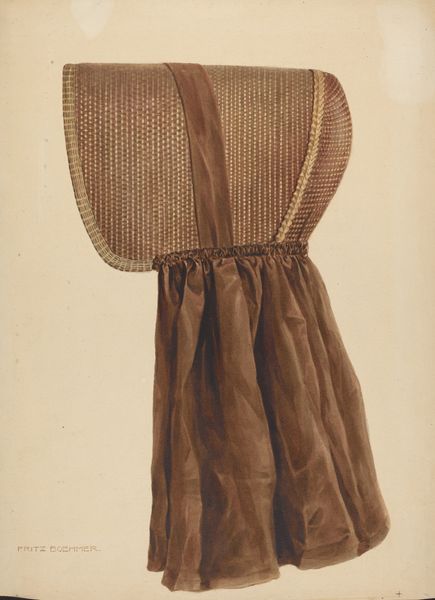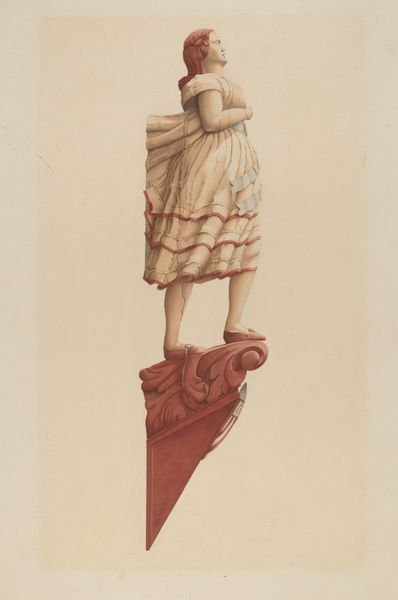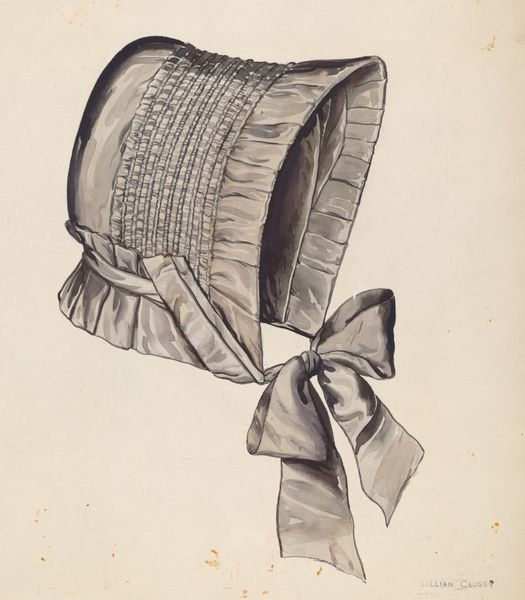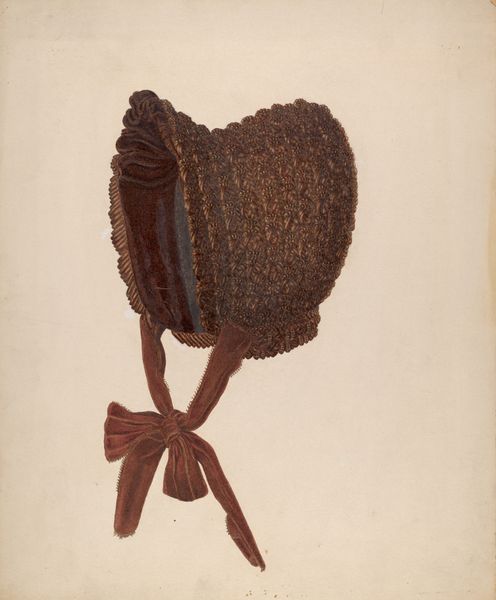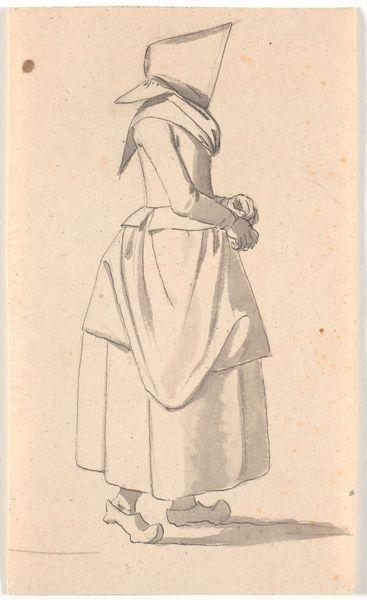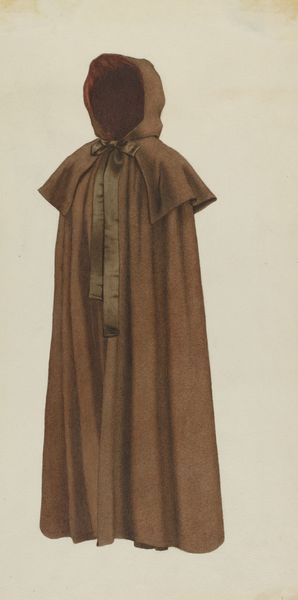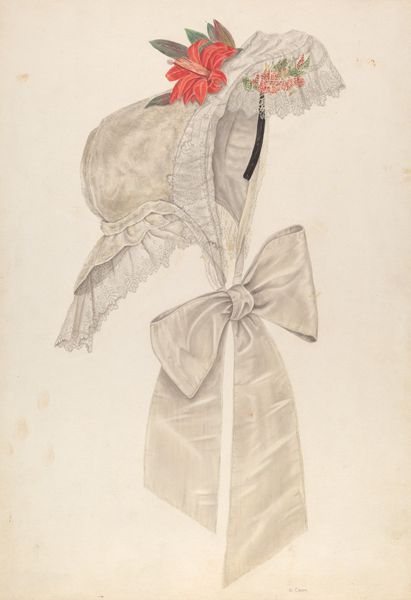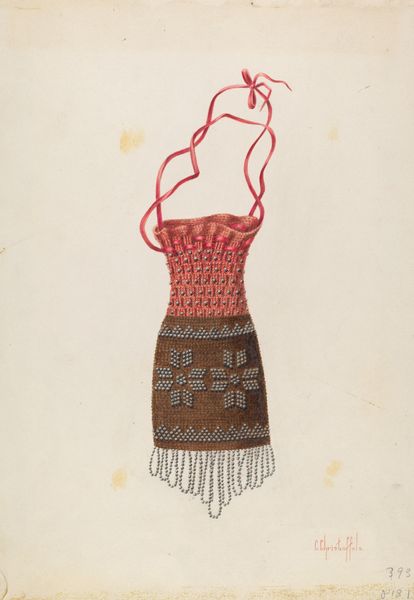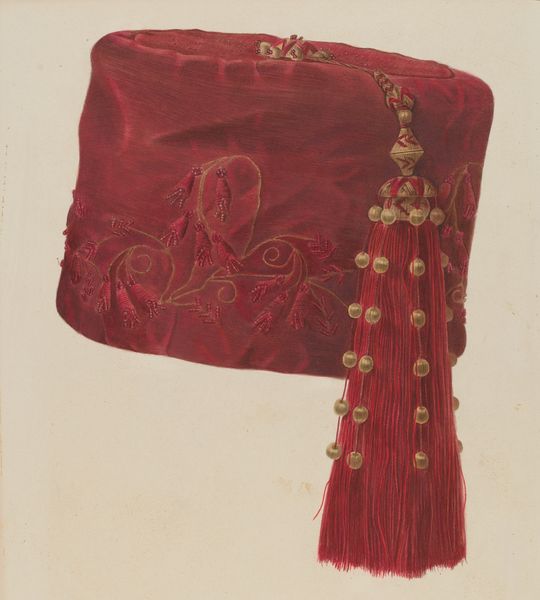
drawing, watercolor
#
drawing
#
watercolor
#
watercolour illustration
#
watercolor
Dimensions: overall: 38 x 30.2 cm (14 15/16 x 11 7/8 in.)
Copyright: National Gallery of Art: CC0 1.0
Curator: It's lovely, this study of a poke bonnet by Nancy Crimi. Done around 1938, it's watercolor and drawing, with a distinctive velvety texture despite the lightness of the media. What's your initial take? Editor: Mmm, muted longing. That deep red, almost maroon, isn’t joyous, but it isn’t exactly somber, either. It speaks of faded affections, perhaps, or cherished memories carefully preserved. Curator: I love that – faded affections. The poke bonnet itself is such an evocative object. Restrictive yet protective. There's a strong sense of concealing or shielding the wearer, creating a little private world. The visual focus and color suggest something held close. Editor: Exactly. Visually, the large size of the ribbon on the front hints at binding, controlling...while the longer ribbons that hang suggest perhaps looser ties, but the color ties it together. Red traditionally has quite complex connotations, and the sense of passion or violence in this work seem to be under a powerful restriction. It also echoes, of course, the heart. Curator: Yes, that crimson cord connects directly to life, and to loss, too. In a way, Crimi manages to take an ordinary item, a humble piece of clothing, and imbue it with powerful, deeply personal associations. Did it cover or express something vital? I’m deeply intrigued...and I wonder, who was meant to see this? Editor: It prompts us to contemplate identity and social context, too. Head coverings – and the way women’s appearance has historically been governed and presented in art -- continue to trigger associations regarding social roles and individual expression. It seems especially charged to focus solely on the bonnet as if the wearer's gaze is irrelevant, almost entirely forgotten. Curator: Well, Nancy Crimi really gave us much more than simply a portrait of clothing. Editor: Indeed. It's more like an icon. The essence of experience transformed into a tangible, visual thing, and charged by absence.
Comments
No comments
Be the first to comment and join the conversation on the ultimate creative platform.

